The Towson University Libraries Diversity Plan was developed in a multistep process which included input from individuals throughout the library.
Diversity Statement
Towson University Libraries values diversity of identity, experience, and ability within our organization, and in the work we carry out. We strive to foster engagement across our community and with ideas by removing barriers and facilitating access to our collections, spaces, services, and tools.
We believe intellectual freedom thrives in equitable environments supported by inclusive and reflective practices. These practices include recognizing, respecting, and embracing differences in order to promote access and provide services based on individual needs.
Towson University Libraries values the physical, emotional, mental, and academic well-being of our students, staff, faculty, and visitors. We celebrate intellectual freedom. Hate speech and other expressions of violence that threaten the safety of our campus community will not be tolerated.
Introduction
The Towson University Libraries Diversity Plan focuses on six areas. Goals 1 through 4 are common across all colleges and university libraries. Goals 5 and 6 are specific to university libraries.
- Pedagogy/Curriculum/Co-curricular
- Professional Development
- Recruitment & Retention
- Student Success
- Collections
- Space & Facilities
Goal I: Pegagogy/Curriculum/Co-curricular
The library directly supports the learning experiences of students inside and outside of the classroom.
Actions
- Share practices and strategies to include diverse perspectives in library instruction through search and source examples.
- Provide multiple modes of engagement for students in library instruction and other information literacy programming.
- Implement “inclusion in the classroom” article discussion.
Goal II: Professional Development
Library employees are supported and encouraged to learn and grow professionally.
Actions
- Host Library Diversity Retreat to identify relevant issues for Library Diversity Plan and engage all library employees in outcomes.
- Draft clear procedures and practices for staff assisting print disabled students with research.
- Coordinate professional development opportunities to build competency and confidence interacting with patrons in specific populations within our diverse academic community (e.g., patrons with vision impairments, deaf community, and neuro-diverse/autism spectrum).
Goal III: Recruitment & Retention
We build a diverse and inclusive workforce using thoughtful, intentional hiring practices.
Actions
- Review & assess recruitment, structure and effectiveness of Residency Librarian Program
- Partner with local schools to encourage a pipeline of diverse students exposed to academic libraries.
- Create internship opportunities for students as appropriate to encourage a pipeline of diverse students exposed to academic libraries.
- Revise search chair information for emphasis on identifying more diverse posting resources.
- Research best practices for job posting language which encourages diverse applicants. Suggest and implement changes that can be made at the library level.
- Expand onboarding strategy for new library employees which initiates communication before the start date with local and informal information.
- Coordinate professional development opportunities to build competency and confidence interacting with patrons in specific populations within our diverse academic community (e.g., patrons with vision impairments, deaf community, and neuro-diverse/autism spectrum).
- Update the Recruitment Repository with a list of diversity related questions for candidates which can be adapted as appropriate for each position.
Goal IV: Student Success
The library contributes to student success through academic support, student development, and campus life and includes our services, outreach, and campus collaborations.
Actions
- Identify best sources and methods for gathering information and responding to student feedback from underrepresented and non-traditional student needs.
- Use results of student feedback and other information gathered to improve or expand aspects of the library which contribute to success of underrepresented student groups.
- Review and evaluate current and potential collaborative opportunities for supporting vulnerable students through existing student success programs, Career Center, Tutoring and Learning Center, other units on campus.
- Develop and implement a messaging campaign that increases underrepresented students’ perceptions of the library as a welcoming place.
Goal V: Collections
The library supports research and academic excellence by providing access to a broad range of diverse, inclusive, and accessible information resources in a variety of formats.
Actions
- Revise the library’s collection development policy to support the proactive inclusion of more voices and viewpoints, both in the collection and in decision-making workflows.
- Develop and implement a workflow to enhance the accessibility of physical materials for patron-requested items on Cook Library shelves.
- Foster new relationships with student organizations that are not represented in the university archives.
- Offer a variety of ways for students, faculty, and staff to contribute their records, stories, memories, etc. to the university archives.
- Partner with discipline faculty across all colleges to promote and support the use of open textbooks and other OERs.
- Encourage broader participation in the collection development recommendation process by increasing its visibility and transparency.
- Ascertain accessibility of any potential new e-resource and vendor plans to provide digital accessibility for their users in the future.
- Prioritize diversity and inclusion topics when selecting books for Leisure Reading.
Goal VI: Space & Facilities
The physical and virtual experiences of those who visit the library should be safe and inviting.
Actions
- Establish a working group to implement the Web Accessibility Work Plan.
- Establish practice of regularly walking through the library to ensure that there are no barriers (furniture, or otherwise) to accessing any public space.
- As weeding continues, and stacks are removed, consider widening the space between stacks to increase comfort and mobility.
- Implement improved library signage.
- Explore options to reconfigure space to accommodate diverse sensory environments for various study environment preferences.
- Identify and determine the feasibility of implementing additional spaces that the library could provide (e.g. community space, children's space, prayer space, meditation space).

